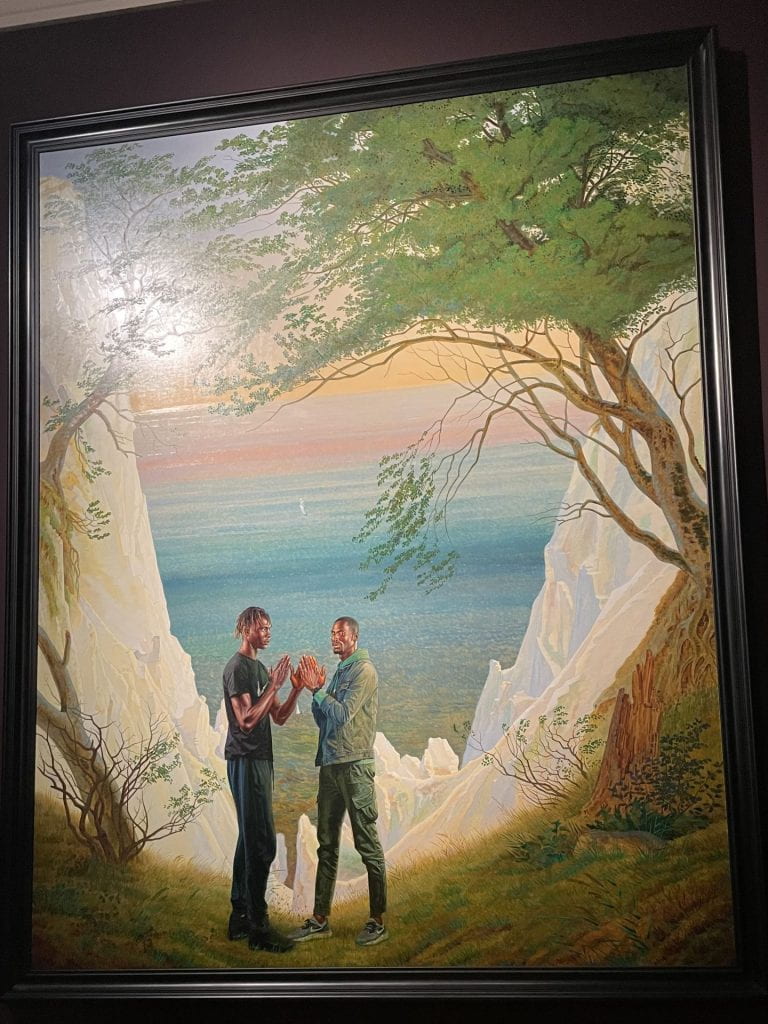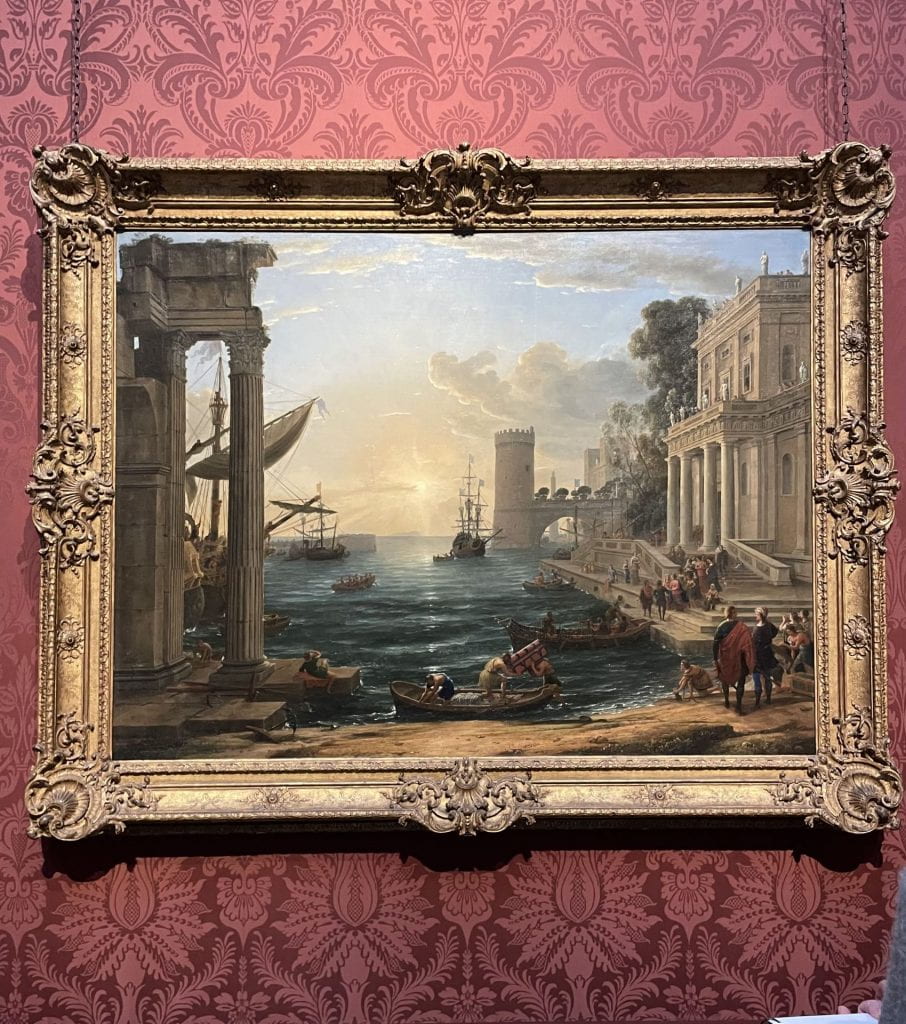Kehinde Wiley: Challenging the Narrative of European Romanticism
On our visit to the National Gallery, we were instructed to contemplate the Kehinde Wiley exhibit, but even if it hadn’t been assigned I would still have been struck by this particular display. Due to the darkness of the room in which his incredible paintings were displayed, they were highlighted and drew my eye immediately. I was struck by the use of color, the brightness and richness of the hues. There was nothing muted or subdued about his paintings. They were unapologetic and bold. They also featured people painted with amazing detail, with hair, skin, and clothes looking almost life like. Something that was interesting to me was the difference between how the people were depicted in contrast with their backgrounds. While the figures were almost photo realistic, the backgrounds looked undeniably painted, with visible brushstrokes and more artistically represented landscapes. As I looked over this contrast in the paintings, I wondered what the significance of this was.
Even before reading the captions and his description of the display, I could tell that these paintings were in the style of the classic European paintings normally shown in museums. Upon reading about the display, I learned that Wiley intended to “challenge the artistic conventions of the Western landscape tradition”. He created these works in the landscape style of the “European Masters”, with some of his inspirations including Claude, Friedrich, Turner, and Vernet’s works of European Romanticism. However, he challenges the norms of this style by creating the focal point in his pieces as people of color in contemporary clothing. This creates a tension between the style of the high tone art masterpieces we are familiar with gracing the walls of fine art museums, but with everyday figures that are rarely seen featured in these pieces. He challenges race, contrasts an elegant and timeless landscape with everyday people sporting modern day clothing and hairstyles. The intention of this exhibit clearly came through and Wiley’s artistic talent is undeniable.

A European Romanticism painting which showed elements incorporated in Wiley’s work was Seaport with the Embarkation of the Queen of Sheba (1648) by Claude. I could immediately see the similarity in the styles of the landscape and lighting depicted here and in that of Wiley’s Prelude. Both paintings featured darker tones on the outside edges of the painting. These darker tones are elements in up close perspective, though while Wiley’s foreground is elements of nature, Claude’s shows columns and buildings, a bustling port as opposed to trees, grass, and cliffs. Both paintings also show the ocean throughout the middle of the paintings in the background, Claude’s waves are darker blue tones and more in shadow, where as Wiley’s waves have a myriad of colors, giving them depth and the illusion the sun’s reflection. Claude’s sun, however, reflects a weaker more cloud-shrouded white. Claude’s piece shows many small figures in the background, while Wiley shows two detailed figures as the focal point of his piece. While Wiley’s figures are more photo-realistic and his background waves more vague, Claude’s piece shows a detailed and life-like background and landscape, with less defined figures. It intrigued me that the areas which the two artists chose to make explicitly detailed were contradictory– background versus people.

While Wiley certainly took inspiration from the composition of Claude’s piece and others like it from the European Romanticism era, he was not afraid to put his own style and choices into the piece. This tells me that while Wiley admires these painters of the past, they do not limit his own creative choices, certainly when if comes to the figures who are the prime focus of his work. The figures shown– two black men– would probably not have been center pieces in works from the European Romanticism era. Wiley’s statement of representation shows that these people not only belong in these beautifully romanticised landscapes, but in fine art museums alongside the subjects of the famed European artist of the past. It drew upon the elements of European Romanticism yet challenged them at the same time. Wiley’s art is not only incredible and impressive, but also powerful.





